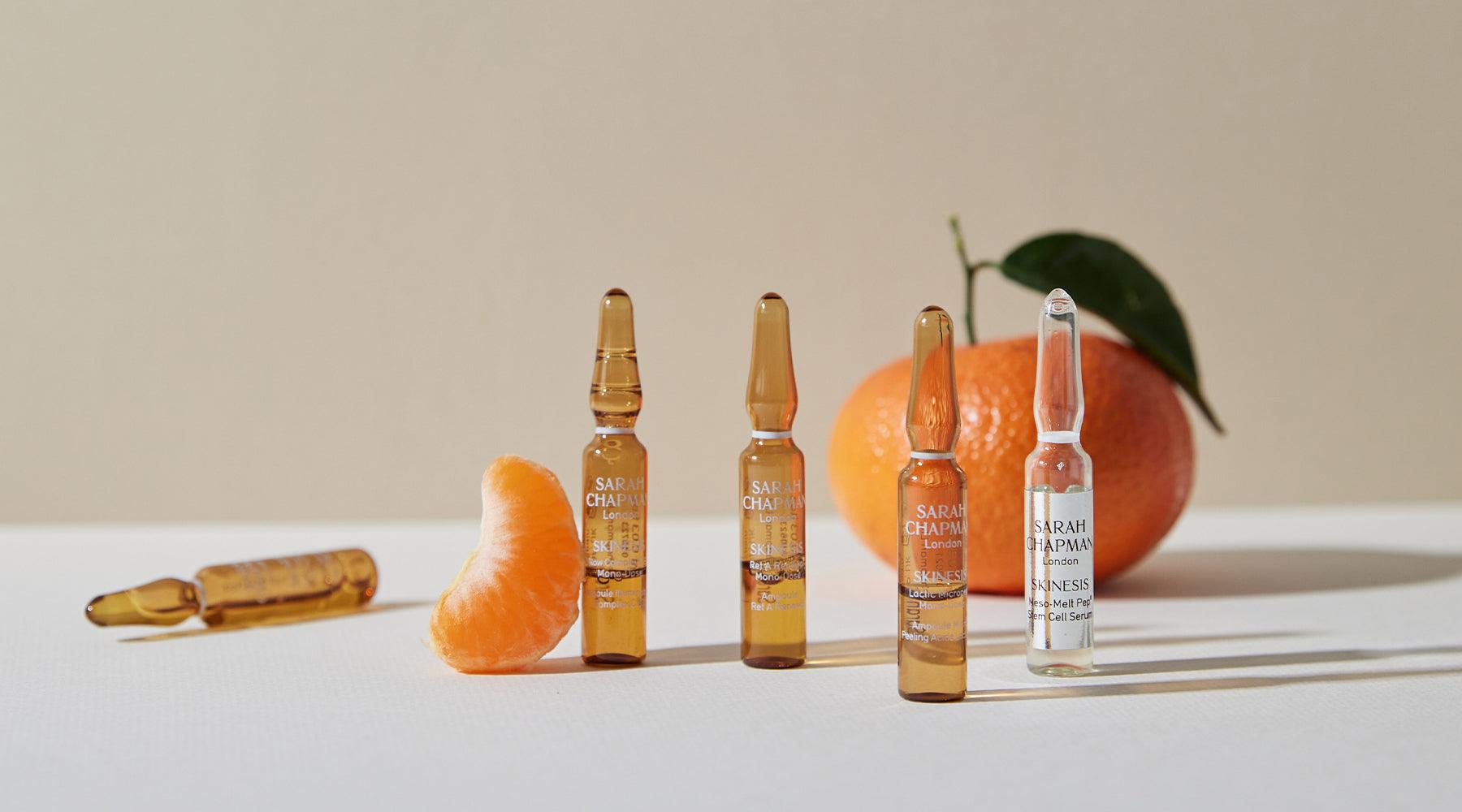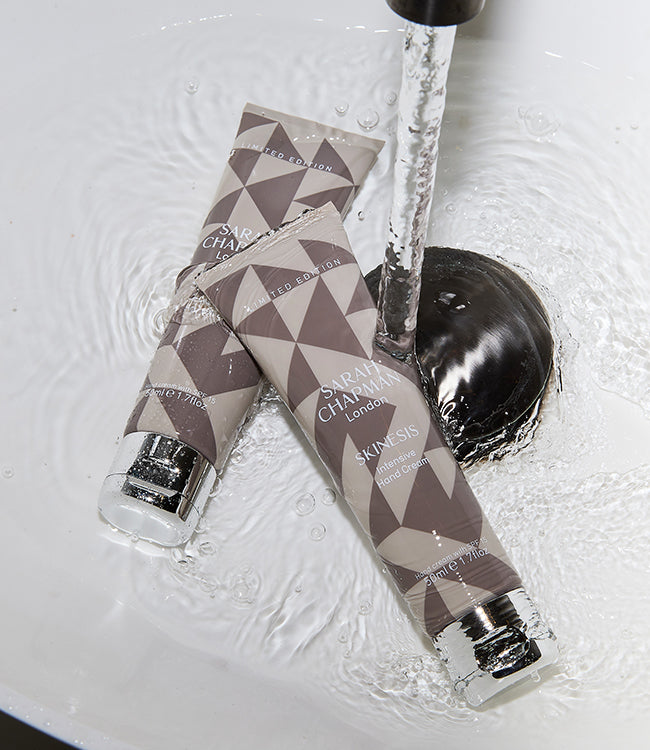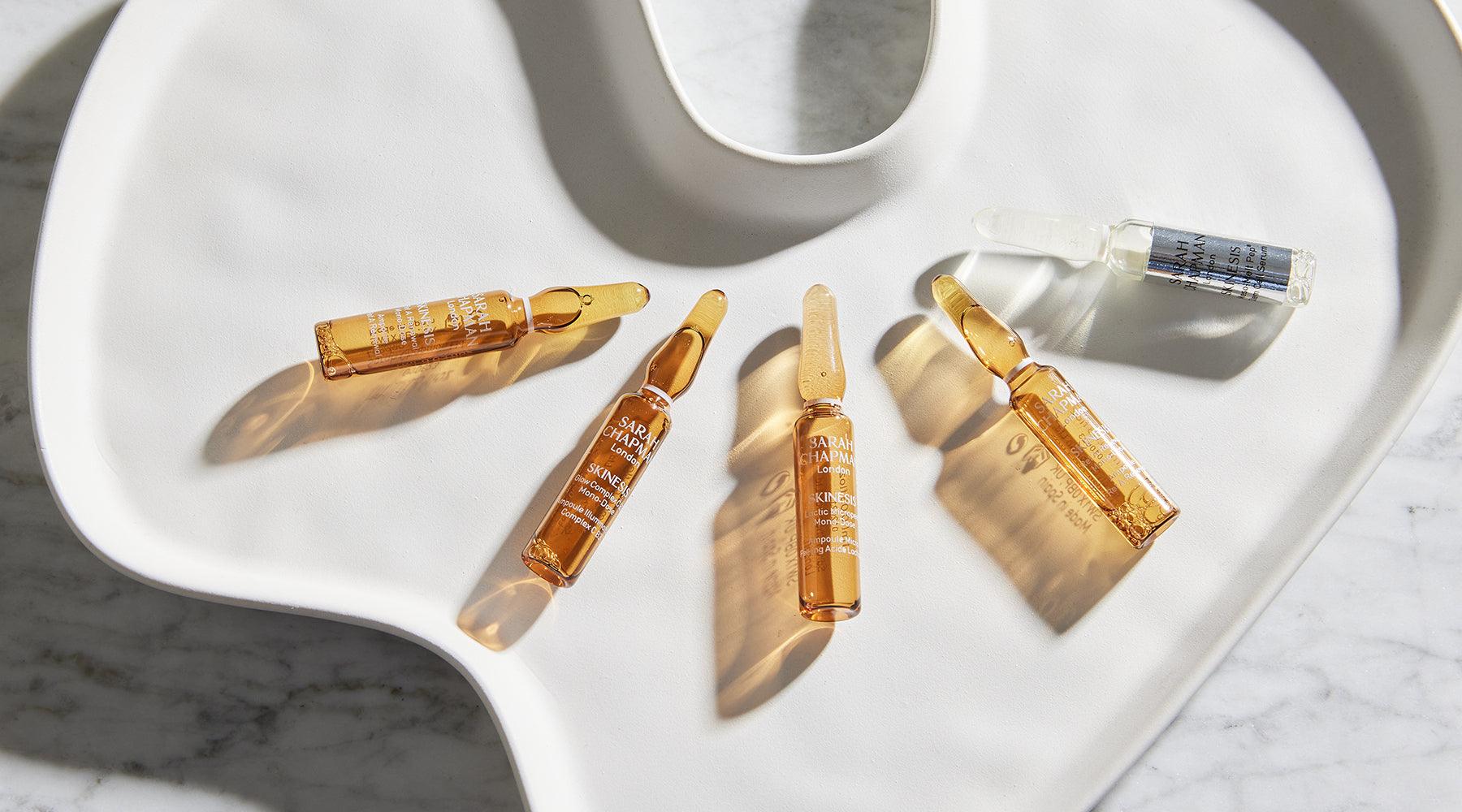Article: Fact or Fiction: Let's Talk Vitamins

Fact or Fiction: Let's Talk Vitamins
Vitamins A, B3 (best known as Niacinamide) and C are some of the most effective, tried-and-tested active ingredients you can incorporate into your routine, each boasting a wealth of research attesting to both its immediate and long-term benefits. Unfortunately, with so much (mis)information available, there are now also many misconceptions surrounding this powerful trio. To help you tell fact from fiction and ensure you’re doing right by your skin, we’re analysing and officially debunking some of the most common myths regarding vitamin A – AKA your retinoids – vitamin B3 and vitamin C.
Fact of Fiction: Vitamin A – Retinoids
01. "Retinoids thin the skin"
Fiction – While retinoids can cause temporary reactions if the skin is not accustomed to them – which is why we recommend gradually phasing in application so your skin can build up tolerance – they do not thin the skin in the long term. Instead, vitamin A derivatives like Retinyl Palmitate, Retinol and Retinal promote collagen production and increase cell turnover, thickening the epidermis for a healthier, more resilient complexion.
02. "The more you apply, the better"
Fiction – Contrary to what you may believe, applying high concentrations of vitamin A won't accelerate results or enhance its performance. In fact, excessive use can damage the skin barrier, leading to irritation, dryness and sensitivity. To avoid these adverse reactions, opt for carefully calibrated formulas like our iconic Overnight Facial, which is infused with omega oils to soothe and nourish the skin while vitamin A and vitamin C work to plump, smooth and brighten it.
03. "All Retinoids are the same"
Fiction – While all Retinoids are derivatives of vitamin A, they come in various forms, such as Retinyl Esters (like our favourite Retinyl Palmitate), Retinol, Retinaldehyde and prescription-only Retinoic Acid. Each form has a different potency and conversion rate within the skin. If your skin is prone to sensitivity, for example, then Retinyl Palmitate would be an ideal option since it's gentler than Retinol as it takes longer to be converted into Retinoic Acid in the skin.
Fact of Fiction: Vitamin B3 – Niacinamide
01. "Niacinamide is only suitable for oily skin"
Fiction – Niacinamide is very effective at regulating sebum production and reducing the appearance of pores, but its benefits extend far beyond that. Extremely versatile, Niacinamide also hydrates, brightens and evens out the skin tone, making it perfect for all skin types, including dry, combination and sensitive skin.
02. "Combining Niacinamide with Vitamin C can cause irritation"
Fiction – This (old) misconception originated from concerns surrounding stability and potential interactions between the two antioxidants that could lead to irritation. However, new research has shown that it's not only safe to combine Niacinamide and Vitamin C, it's extremely beneficial for the skin, with the powerful duo working synergistically to address various skin concerns, from hyperpigmentation to signs of ageing. You can actually find both in the brightening Glow Complex C B3 ampoules in our new Illuminating 5-Day Facial.
03. "Niacinamide can cause skin purging"
Fiction – It's extremely uncommon for Niacinamide to cause any irritation or extreme sensitivity; if it has happened to you or someone you know, it might be due to an allergic reaction. Unlike vitamin A and vitamin C, Niacinamide does not accelerate skin's natural cell turnover, which can lead to an initial increase in breakouts as the skin "pushes out" impurities and sheds dead skin cells faster than usual.
Fact or Fiction: Vitamin C – Ascorbic Acid and its derivatives
01. "Vitamin C loses its potency when exposed to air or light"
Fact – Vitamin C, especially in its purest form (L-ascorbic acid), is quite acidic and unstable, suffering oxidization when exposed to air, light or heat. This then causes it to lose efficacy and potency over time. To mitigate this issue and protect our vitamin C-rich formulas from degradation, we only use airtight, vacuum-based delivery systems; without air, the product does not come into contact with oxygen, and without oxygen, oxidation cannot, of course, take place. Our Radiance Recharge System is a great option as it contains ascorbic acid, a pure form of vitamin C, in opaque ampoules to maintain potency.
02. "Vitamin C only helps brighten the skin"
Fiction – While it's true that vitamin C is best loved (and known) for its brightening effects, it has many other skin benefits. For instance, it can act as a potent antioxidant that neutralises free radicals – unstable molecules that can damage collagen and elastin – offering protection from environmental damage and supporting the skin barrier. Like vitamin A, it also works to stimulate collagen synthesis to reduce fine lines and wrinkles and improve skin firmness, contributing to a more youthful-looking complexion.
03. "The higher the concentration of vitamin C, the more effective the formula"
Fiction – If only it was as easy as that! As we've stated before, pure vitamin C is a highly acidic and unstable molecule, so its efficacy will depend on many factors, including formula pH, stability and bioavailability. With Skinesis, you can rest assured that all vitamin C-infused formulas are carefully balanced to ensure the best results and well-tolerated power that doesn't compromise your skin barrier.



